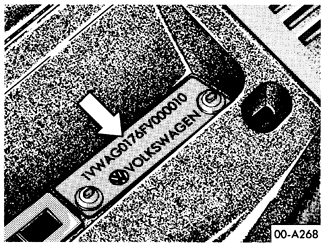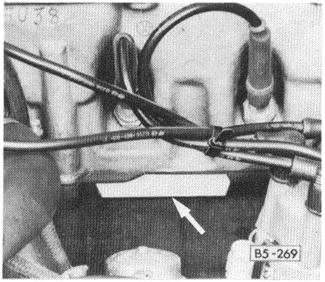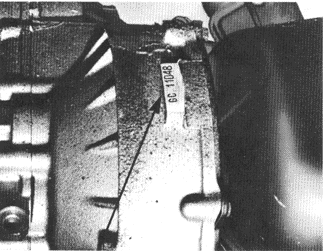What Information You Need To KnowModel Year. This is not necessarily the same as date of manufacture or date of sale. A 1986 model could have been manufactured in late 1985, or perhaps sold as late as early 1987. It would still be a 1986 model. If in doubt, consult the vehicle identification number (VIN), explained below. Model. GTI, Golf, and Jetta are all model names. In some cases, buying trim parts for example, it may be helpful to know more model details, such as GL, Wolfsburg Edition, etc. Vehicle Identification Number (VIN). This is a combination of 17 letters and numbers which identify the particular vehicle. The VIN appears on the state vehicle registration document, and on the car itself. One location is shown in Fig. 3-8.

Copy down the VIN and have it along whenever buying parts. If there was a mid-year change in specifications which affects replacement parts, the change will often be defined in terms of VIN. In addition, each of the 17 letters and numbers indicates certain facts about the car and its manufacture. Some are useful to know for buying parts. For example, in the 10th space is a letter indicating model year. "F" is for 1985, "G" is for 1986, "H" is for 1987, "J" is for 1988, "K" is for 1989, "L" is for 1990, "M" is for 1991 and "N" is for 1992. The next letter, the 11th, indicates where the car was made. "V" is for U.S.-built cars, "W" is for German-built cars, and "M" is for cars built in Mexico. Engine Code. All GTI, Golf, and Jetta engines are very similar, but subtle design differences mean that some parts of the engines and related systems are different. The different engines are identified by a character code that may be made up of letters and/or numbers. The code is part of the engine number stamped on the cylinder block, as shown in Fig. 3-9. For a complete explanation of the engine codes and how to find them, see the section titled ENGINE.

Transmission Number. Although most internal repairs to the transaxle are beyond the scope of this manual, the transmission number with its identifying code may be important when buying clutch parts, seals, gaskets, and other transmission-related parts for repairs which are covered. The location of the transmission number is shown in Fig. 3-10. The number consists of two or three transmission code letters followed by a number signifying date of manufacture. For example, "AGB18117" identifies an AGB transaxle built on the 18th of November, 1987. More information on transmission codes and their meanings can be found in MANUAL TRANSMISSION AND CLUTCH and AUTOMATIC TRANSMISSION.

Volkswagen dealers are uniquely qualified to provide the best possible service for Volkswagen cars. Their ongoing relationship with the large Volkswagen service organization means that they are constantly receiving new tools and equipment, together with the latest and most accurate repair information. The Volkswagen dealer's service technicians are highly trained and very capable. In addition to periodic Volkswagen Service Training courses which keep them up to date on all the latest technical features and service methods, Volkswagen dealers recognize and actively promote professional technician certification by the National Institute for Automotive Service Excellence (ASE). Unlike independent repair shops, authorized Volkswagen dealers are intensely committed to supporting the Volkswagen product. They share every owner's interest in Volkswagen value, performance, and reliability. |